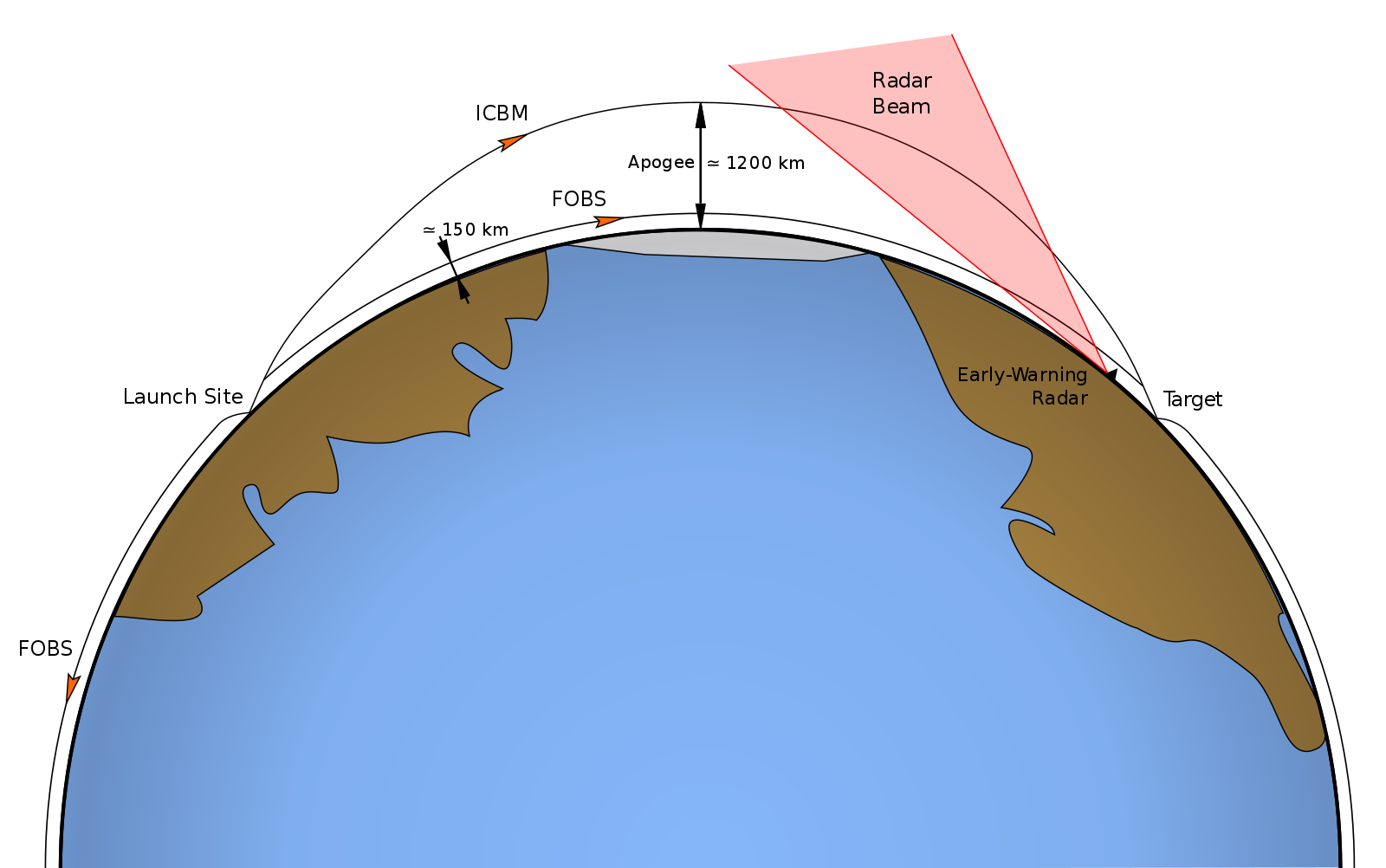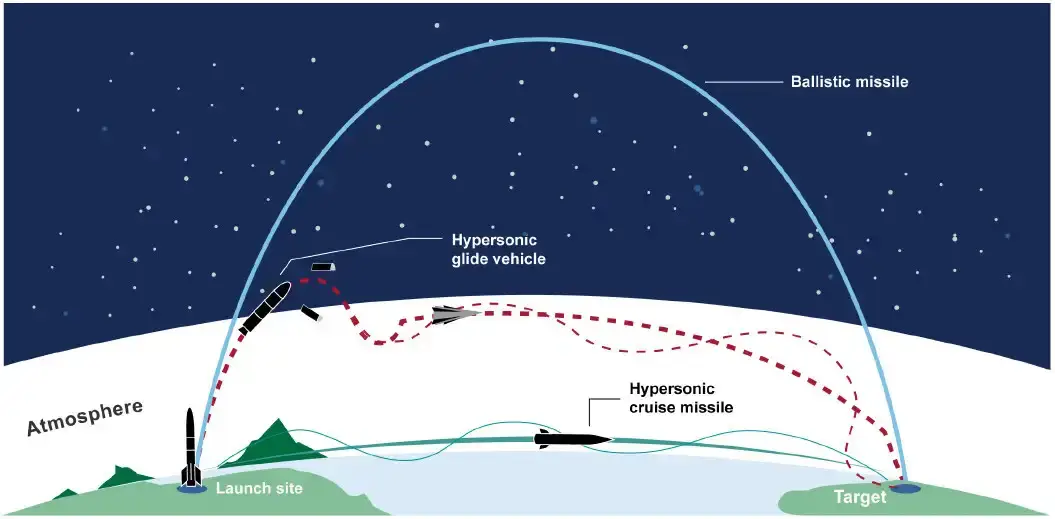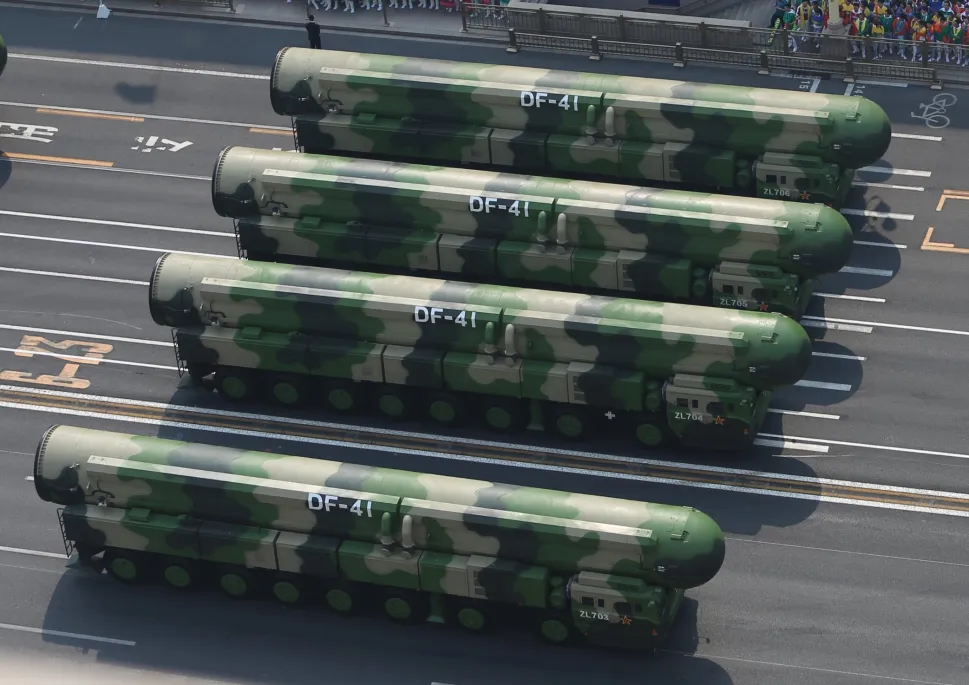The U.S. Department of Defense has added additional color to the mysterious nuclear-capable hypersonic weapon test China conducted over a year ago, saying that it “likely demonstrated” the People’s Republic of China’s capacity to field this capability.
The test made headlines that year for demonstrating the use of a fractional orbital bombardment (FOB) system capable of flying “around the world,” as now-retired Air Force General John Hyten described it, by staying in orbit for as long as the user deems necessary before re-entering the atmosphere with immense kinetic energy and gliding to its target. In official documents released on November 29, the Pentagon detailed what is presently known about China’s FOB-capable hypersonic weapon, going so far as to say that the missile traveled approximately 24,854 miles (40,000 kilometers) during the July 2021 test.

This information was included in the Defense Department’s annual Military and Security Developments Involving the People’s Republic of China report, more commonly known as the China Military Power Report (CMPR), which serves as an assessment of China’s current defense strategy and military capabilities. While the CMPR analyzes a wide array of Chinese military advancements, it was especially beneficial in clarifying what exactly occurred during the country’s highly intriguing hypersonic weapon test that took place on July 27, 2021, which can be read about in detail here.
The event largely left more questions than answers about China’s hypersonic capabilities, namely whether or not the country actually has a FOB-like concept that used a hypersonic glide vehicle, and one that can apparently deploy its own weapons as it races towards its target area, as was reportedly the case during the test. Even though the information provided by the Defense Department in the CMPR is limited, what is mentioned does reinforce some otherwise big statements made by top U.S. military officials about this weapon’s ability to execute these orbital strikes.
“On July 27, 2021, China conducted the first fractional orbital launch of an ICBM [intercontinental ballistic missile] with an HGV [hypersonic glide vehicle],” the CMPR revealed. “The HGV flew around the world and impacted inside China. This demonstrated the greatest distance flown (~40,000 km) and longest flight time (~100+ minutes) of any land-attack PRC [People’s Republic of China] weapons system to date. According to senior U.S. military officials, the HGV did not strike its target, but came close.”
The CMPR went on to add that the capability tested in 2021 was built upon previous Chinese hypersonic weapon development progress. The Pentagon believes that China is “probably” developing a number of advanced nuclear delivery systems, like the FOB system and the hypersonic glide vehicle both tested in 2021, due in part “to long-term concerns about United States missile defense capabilities as well as to attain qualitative parity with future worldwide missile capabilities.”
FOB systems date all the way back to the Cold War when the Soviets developed and deployed a limited number of them using an ICBM-like missile to put a more traditional re-entry vehicle containing a nuclear warhead into orbit. The warhead could then be de-orbited in a controlled manner to strike a target. As The War Zone discussed in this previous breakdown of the FOB concept, the depressed flight profile and capacity to strike really any target near its orbital path pose quite the challenge for an opponent’s tracking and missile defense networks. The FOB system could attack from vectors that its opponent’s radars are not looking toward, affecting its ability to anticipate where and when a strike may occur, let alone counter one.

China’s FOB-like system, though, instead carries a maneuverable hypersonic glide vehicle as opposed to a traditional nuclear-armed reentry vehicle, allowing it to change course dynamically and fly at lower altitudes, even porpoising as it goes, during its flight through the atmosphere. This allows it to hit targets much farther off its orbital flight path and makes interception nearly impossible. As noted earlier, reports that China’s hypersonic glide vehicle had also released its own projectile while on its very high-speed descent complicates things further, as The War Zone explained in detail in this past article.
The Financial Times, which was the first to report on the test, even emphasized how caught off-guard the Pentagon was by this development considering how technically complex it would be for anything moving at high hypersonic speeds to launch its own projectile. Knowing the technological breakthroughs that achieving this would require made it difficult to ascertain what exactly the hypersonic vehicle could have deployed, and the Pentagon’s CMPR, unfortunately, doesn’t seem to offer much else in this regard.

While the report was certainly helpful for gaining a more general understanding of where China stands in the global hypersonic race, the document also didn’t provide any additional detail in terms of any potential fielding timeline for the country’s FOB-capable hypersonic glide vehicle. However, just because the system isn’t confirmed to be fielded yet doesn’t mean that China isn’t planning to, at least with the weapon in its current form. As the Pentagon noted in the CMPR, the July 2021 test “likely demonstrated the PRC’s technical ability to field a FOB system.”
The Pentagon throughout the CMPR cited the U.S. military’s own advancements in the hypersonic realm as the predominant driving factor behind China’s innovations while admitting that most of China’s missile systems are “comparable in quality to systems of other international top-tier producers.” An underlying fear that the proliferation of hypersonic technology could soon “blur the line between nuclear and conventional escalation” was also highlighted as a potential motivator behind these advancements. These influences are being reflected in other Chinese strategic developments, as well.
Regardless, it is important to note that U.S. missile defenses, as they exist now, aren’t anywhere capable of deflecting a massive nuclear strike from a near-peer like China or Russia, which is something The War Zone has previously touched on. Defending against hypersonic weapons, especially ones that can attack from unpredictable vectors like this FOB-capable system would be able to, is an even more challenging proposition.

However, that isn’t to say that progress in this area isn’t being made. For example, the Missile Defense Agency is currently working on its plans to develop integrated fire control and sensor fusion networks to defend against hypersonic threats, and the Space Development Agency is three years away from launching the first of its satellite-based hypersonic missile tracking constellations. The multi-purpose SM-6 missile is also capable today of defense against some hypersonic weapons, but even then its capability is extremely limited and is likely only relevant in certain point-defense situations.
The Pentagon’s further elaboration on China’s FOB-capable nuclear-armed hypersonic glide vehicle is another sign of just how hot the hypersonic weapons race is becoming. While there is an incredible amount of disclosed hypersonic weapons development happening in the United States, there is a lot that remains classified, as well. Those efforts are only likely to grow, and with China clearly working to nullify America’s missile defense capabilities, this is unlikely to be the last exotic long-range strike weapon we will see emerge out of China in the coming years.
Contact the author: Emma@thewarzone.com
